This blog is retired as of July 2019! Feel free to scroll through for writing tips, a dose of hearty encouragement, and some cool octopus facts. Follow the Deep Water link to find me at my still very active prompt blog! - L
Don't wanna be here? Send us removal request.
Photo
Hi everyone! As I explained earlier this summer, the time has come to retire this blog. It’ll still be here, I just wont be posting anymore, so no big fanfare or announcement.
Thanks to everyone who followed me over the years! And to everyone who found vaguely threatening encouragement in the above small octopus. I love you! Find me at Deep Water Writing Prompts, my infinitely more active side blog!
stay weird and keep writing.
- L


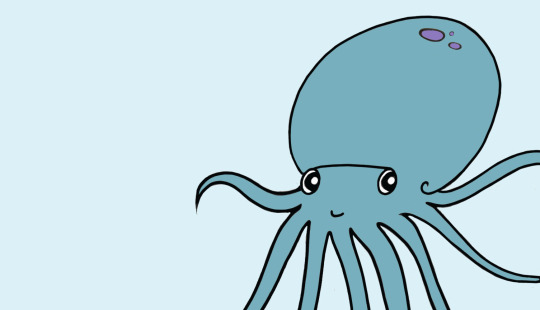

Go.
(yay there’s a banner!)
265K notes
·
View notes
Photo
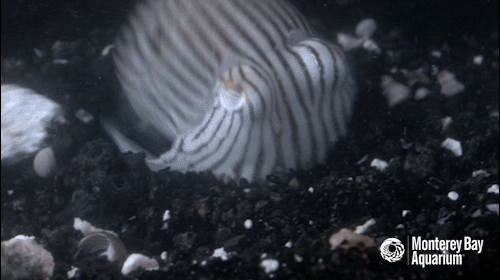
Tucking ourselves in for one last day of cephalopod content with a pyjama squid slumber party! 😴
youtube
The striped pyjama squid may seem shy and sleepy, but beware to all passing shrimp! These nocturnal hunters bury themselves in the sand with only their eyes peeking out, waiting for something tasty to stroll by.
957 notes
·
View notes
Text
Tips to finishing creative writings
Have one main piece and several smaller ones The story you are most eager to write and has some form of a developed plot should be your main story, but don’t limit yourself to only that piece. That’s when you abandon it. Instead, tell yourself, “I have a good idea for another story. Let me write 500-1000 words of it.” This allows you to put what’s in your mind on paper. You can also get a feel for it and see if it is really something you think you could write an entire story for. When you finish your main story, come back to it and make that your new main if you still want to write it.
Use your desire to write another story to finish the one you’re working on Continuing with the point from above, if you are still extremely excited about your small work, use that enthusiasm to fuel your current story. Tell yourself, “I need to finish X story before I can write Y story.” You will write so much more and so much faster than you ever planned. You can also be proud that you finished something you originally planned to abandon.
Love your characters This may seem obvious, but writing is hard if you don’t even know or like your characters. Draw your characters together. Give them funky clothes or send them abroad. Even make an AU of your story in your head. If you can’t draw, find an avatar creator and give your characters a tangible image. The more you love your characters and give them personalities, the more eager you will be to write about those characters.
Take a break Be kind to yourself. You’re only human. If life is stressful and writing is more of a chore than it is fun, take a break. When you have more free time and are excited to write again, sit down, grab a pen, and find yourself happily immersed in a world you haven’t visited in a while. Good luck with your stories and be kind to yourself <3
7K notes
·
View notes
Photo

To Be Written
Source: Steven Ingels
20K notes
·
View notes
Text
Faerie List
Alvens: These are Water faeries who float around on bubbles and hate fish. During a full moon, they come on land to dance and play. They are not particularly friendly.
Amadan Dubh: This is a particularly dangerous type of faery that is greatly feared among the Gaels. They are known as the “fairy fools,” and the bringers of madness and oblivion. They play faery enchantments on their reed pipes on hilly slopes and precipices after sunset.
Banshee: The name “banshee” means a woman of the faery. It corresponds to the “Fear Sidhe” or faery man. The wild banshee wanders through the woods and over the moors at dusk, and some- times lures travelers to their death. Banshee can also travel at will to great distances. Appearing in tattered gray clothes, they are basically a sociable faeries who have become solitary through sadness and grief. They are the honor- able ancestral faery women of the old clans of Ireland, who are heard, but rarely seen. They wail a blood-curdling lament just before mis- fortune, illness, or death occurs in their ancestral families. Their wail can kill or instantly age mortals who hear it. Banshee also avenge the death of their descendants. They generally appear either as beautiful maidens or gruesome crones. Salt water and silver can harm them.
Bendith Y Mamau: They have the ill disposition and ugly appearance of goblins, but the glamour of the faeries. Living in underground caverns, they don’t care very much for mortals and they have been know to steal cattle and children, to kill farm animals, and to break important tools.
Billy Blin: A household familiar who is popularized in English and Scottish songs.
Boggart: They are known for breaking things and making trouble, but seldom do serious harm. Most old homes have a boggart. The supernatural boggart is sly, annoying, mischievous, and a prankster. They pull the covers from sleeping mortals, rap or pound on the door at odd times, or rearrange the furniture at night when you are sleeping.
Brownie: They are from 1 to 2 ft. tall and are scattered throughout the highlands and lowlands of Scotland as well as the northern counties of England. They have brown, wizened faces and hair growing all over their body, so they don’t need to wear clothes (although sometimes they are seen wearing brown cloaks with hoods). As household faeries, they do unfinished jobs such as mowing, threshing, caring for the laying hens, and tending the sheep and cattle. They bring good luck to a family, providing that the family treats the brownie well. Brownies also love animals and will take care of the household pets. They adore gifts of food and drink such as milk and honey cakes, but abhor gifts and wages. Urisks are the Scottish version of brownies.
Buccas: Residing in Cornwall, they are magickal beings that inhabit mines. Also called tinmine demons, they are the wind goblins that foretell shipwrecks.
Bwca: This is a sort of Welsh version of a brownie, but a more particular one. They can be great help around the house, but if offended they can become harmful, throwing things around the house, spoiling the milk, and ruining the beer.
Callicantzaroi: Naked, they ride about on chickens. They live in troops and are zealous in their celebrations of Yule.
Clim: A mischievous goblin that resides in chimneys and peeks out at children, scolding them when they are bad.
Clurichaun: Residing in southwest Ireland, they are renowned drunkards who both guard and raid wine cellars. The Clurichaun sing in Gaelic and have beautiful, magickal voices.
Coomlaen: These “elven steeds” appear as tall, thin, white or silvery horses who live in the forest and are always in the company of elves. As shapeshifters, the coomlaen can take the shape of their de- sires, but must return to the shape of a horse once during each day for at least six hours. They are fiercely devoted to one rider at a time and the bond lasts for the lifetime of the rider. The two communicate telepathically. Because the Coomlaen defends its rider, in order to befriend a coomlaen you must first befriend its rider. Coomlaens adore gifts of apples and honeysuckle. Iron is harmful to the coomlaen.
Cooshie: Also known as the “elfin hound,” they live in the forest and appear as large, silver-furred wolves that move quickly with the grace of a large cat. The cooshie stay with their elfin masters, and have heightened senses, including knowing when there is any magickal, spiritual, or physical presence in their territory. Like elves and coomlaens, they have an aversion to iron. Cooshies can heal sick or injured travelers and calm troubled minds and hearts.
Corrigans: From Brittany and Cornwall, they live in the woods, near streams. Corrigans are winged faeries who like to play pranks, such as taking human babies and replacing them with changelings.
Daoine Sidhe: The immortal polytheistic group of goddesses and gods of Pagan Ireland who merged with the land, these are the cream of the crop of faeries that form a faery nation. They appear in human form, dressed in green, and are called the peaceful faeries. They preside over the faery kingdom, play sweet music, dance, ride milk-white faery horses, and are generally accompanied by their faery hounds.
Dryad: They are happy, friendly, and playful wood nymphs who live in and take care of the trees. They are born of the same seed as the place they live. Dryads are the color of tree bark or leaves and their dark green hair is extremely long and flows about them. They can disappear by stepping into a tree, as if stepping into a dimensional door. Sometimes their skin is dappled like a tree trunk. Dryads are usually very charm- ing, sing beautifully, and particularly like willow and oak trees. Damaging a dryad’s tree harms the dryad as well, but the dryad can defend its tree by creating storms and lightning.
Dwarfs: Both male and female, dwarfs are usually from 3 to 5 ft. tall, with broad shoulders, large muscles, long arms, stumpy legs, and lots of facial hair. They are quick tempered, loyal, and immune to physical damage. Working with Earth, Fire, and stone, they are found underground under moun- tains and hills where they mine metals and gems, especially copper. Their craftsmanship is unmatched in the mortal world. They adore gifts of both precious metals and gems.
Eash Uisge: They are the Highland water horses known for being fierce and dangerous. They have the ability to shift into the shape of young, hand- some men.
Elves: According to Norse mythology, elves and dwarves are created in the time before humans from the body of Ymir, the giant. Inhabiting one of the upper worlds, and often found in Natural settings such as woodlands and forests, elves are somewhere between mortal and divine. Originally between 5 and 7 ft. tall, they were thin, strong, flexible, and quick. Their hair was usually red, blond, or light brown, and they had cat-like ears. Their cat-like eyes are green, blue, silver, or gold with slitted pupils. Through time, the elves became Elemental spirits of the land, sea, and forest, who are sometimes por- trayed as small, good-natured creatures with brown skin and delicate features. Iron does not kill elves, but it can injure them. They adore gifts of quartz crystal, pearl, moonstone, and silver. In the Western world, Santa Claus and his helpers are elves.
Ferrishyn: The Manx name for the faeries, also known as the “sleigh beggey.”
Fir Dearg: Also known as the “fear darrig” or the “red men,” they are a mischievous, rare breed of faery, who dress in red and have red hair. Their only interest seems to revolve around playing practical jokes on humans.
Ganconer (Gean-canogh): Also known as a love faery, the ganconer is a leprechaun-type faery who appears as an incredibly handsome young male. Called the “lover-talker,” he spends most of his time seducing milkmaids and shepherdesses. Appearing in lonely valleys and fields, they are known for playing beautiful songs on their pipes, but their fate is ultimately to be alone.
Gnomes: They are elderly dwarf people who stand from 1 to 2 ft. tall, and like dwarfs, live under- ground except for the few times when they come up to roam in the deep forest. Male gnomes grow long beards. Gnomes live under old oak trees in heavily forested areas, and like gifts of beautiful stones.
Gray Elves: Not choosing to associate with any other magickal beings, they live in isolated meadow- land. Gray elves have either silver hair and amber eyes, or pale, golden hair and violet eyes. They are very intelligent and extremely rare.
Gwartheg Y Llyn: The Welsh name for faery cattle, said to be usually milk-white in color. A farmer who gained the favor of this magickal cow was said to be richly rewarded, but the farmer who tried to lift a hand to hurt the animal would find misfortune would come to the farmer.
Gwradedd Annwn: The Welsh name for the “lake maidens,” they are beautiful and desirable, but are not like sirens and nixies. They are known for marry- ing mortals much like the Silkee or “seal maidens.”
Hobgoblins: They are the English cousins to the Scottish brownie and Welsh bwca. A house faery, a hobgoblin’s favorite place is behind the kitchen fire, once known as a “hob.” Once settled, they rarely leave the house, and when feeling ne- glected, they are known to hide keys in the most unlikely places. They are vulnerable to iron and gold. In folklore and literature, both Robin Goodfellow and Puck are hobgoblins.
Knockers: In Cornwall, they are generally helpful mine sprites that are particularly attracted to rich veins of ore. Miners of old were said to follow the sound of the knockers’ tools pounding the rocks to find a strike. Knockers are also known to warn against cave-ins and floods, and as such, the miners always leave them gifts of food and drink. In Wales, knockers are known as “coblynau.”
Kobold: The German name for the “little people,” originally they were tree sprites who were captured and brought home in wooden boxes. The per- son who captured the kobold could open up the box and the kobold would do things for her or him. But if anyone else opened the box, the kobold would take revenge for being confined. They formed the basis for the original jack-in- the-box for children. They are old men the size of small children who wear pointed hoods or caps and green clothing. Loud noises and strong winds scare them. For gifts of food and milk left out at night, they will do any little job around the house and barn, such as washing the dishes, preparing meals, sweeping the floor, making the fire, or tending the farm animals. Kobolds also have the ability to cast binding spells and will go to great efforts to protect the members of the household. If mistreated, they can become truly nasty.
Leanhaun (Leanan) Sidhe: They are the faery mistresses or sweethearts of Scotland and Ireland. They crave love, and try to gain power over their lovers, treating them like slaves and draining all the life out of them before moving on to new lovers. Said to be an inspiration to poets and musicians, these magickal faeries act as sort of muses, giving the artist’s work an otherworldly quality.
Leprechauns: They usually manage to trick their way out of surrendering their gold. Only a select few get away with a leprechaun’s riches. Solitary faeries of Ireland, witty, fascinated with gold, they can pass by as a swirl of dust, knocking off your hat. They are generally 2 to 3 ft. tall, with wizened faces, bright eyes, and red noses. They dress mainly in greens and browns, and are known for their excellent shoe-making skills.
Lorilei: A solitary faery, who is beautiful and bewitching, she is known for lounging on rocky heights while singing a song of enchantment.
Lunantishee: They guard the blackthorn bushes particularly on Samhain and Beltane. If you cut a stick from the bush on either one of those days, you will suffer misfortune.
Mermaids/Merrows: They live in the airy palaces be- neath the waves. They wear red-feathered caps to swim from their underwater world to ours. If a mortal steals the cap, the merrow can’t get back home. The females are beautiful, the males are ugly with green faces and red pig noses. Both have fish tails and webbed fingers. Taking mortal lovers, their offspring are covered with scales.
Muryans: Cornish faeries, the word “muryan” means “ant.” These are faeries the size of ants, who are shapeshifters. Every time they shift shape, they get smaller, eventually getting so small, they disappear from sight.
Nixie: They are Water sprites that inhabit lakes and seldom venture onto land. Their houses are made from seaweed and are guarded by giant fish. They are known for charm spells that convince humans to do their bidding.
Nymphs: Nature spirits who evolved into faeries, they live in clear lakes, streams, and crystalline caverns. Intelligent and beautiful, they do not like intrusion, but will be friendly if approached by a good-hearted mortal. Nymphs have the power of prophecy and take mortal lovers. They are also said to be extremely hard to avoid once they have taken an interest in you, and can occasionally be dangerous if they become obsessed with you. Often traveling in pairs, nymphs are mobile, but they can also permanently align themselves with trees, rock outcroppings, mountains, rivers, and springs. They appear as young, extremely gorgeous women, who are frequently dancers, artists, and musicians. They are amorous and have insatiable sexual appetites. According to folklore, a nymph’s lifetime was the same as that of the phoenix, who outlived nine ravens, who out- lived three stags, who outlived four crows, who outlived nine generations of aged mortals.
Oakman: A wood faery who lives in oak trees, the oakman is a guardian of the animals. The familiar saying “faery folks are in old oaks” speaks of their kind. The oak is considered the tree of the dead and the abode of departed spirits. Oakmen resemble drawfs with red noses, wear red toadstool caps, and have an affinity with bluebells.
Pechs (Pehts): The name used for the faeries of the Scottish Lowland, Pechs are said to be like the feens of the Highlands and the trows of Shetland.
Phouka (Pooka): Originally deadly sea horses with glossy coats and metallic-like hooves, phoukas are now often viewed as wild, mischievous creatures who are related to the leprechaun. Phoukas can employ the shape of an animal in order to play wild pranks and kill mortals. In contrast, in some stories that are told about them, phoukas that are treated kindly are known as friendly beings that help farmers.
Piskies (Pixies, Pigsies): Found frequently in Cornwall, Devon, and Somerset, England, they stand 1 ft. high (or smaller), are slim, and wear green clothes and pointed red hats. They have blond hair and green eyes, pointed ears and chins, and turned- up noses. They can also levitate and move tiny objects from one place to another. Usually friendly, they can also be mischievous, and are known to steal horses and ride them around in circles, creating Faery Rings as they do.
Portunes: These are teeny tiny faeries that are about a finger’s length or less in size.
Redcaps: They live in castles and towers where evil deeds have been done so they can feed off the energy and create more of their own. They look like brownies, but wear caps made red by the blood of passing strangers at whom they have thrown stones.
Salamander: They are the powerful Spirit faeries of Fire because the salamander embodies the in- tuitive Element of Fire. Without the salamander, Fire would not exist. They come in all sizes and differ in appearance, but they are most often seen as being similar to a 1-ft. long lizard. They can grow larger or smaller at will. Sometimes they are seen as a ball of gold, orange, or red light. They are very devoted and quick to defend a friend. Working with the salamander helps you develop and strengthen your intuitive side.
Seelie: A good-hearted and benevolent group of faeries who glow as they ride the winds in search of humans needing help. The court of the kindly faery host is called the “Seelie Court.” “Seelie” means “blessed” in Gaelic. These benevolent faeries give gifts of bread and seed corn to the poor and pro- vide all kinds of help to their favorite mortals.
Sheoques: Appearing human-like, they live in ancient thorn bushes and faery forts that are surrounded by ditches. Also known for their bagpipe playing, they enchant and steal children, most times returning them unharmed and happy.
Shock: They appear as a horse, donkey, large dog, or calf. They are frightening and something to get away from if, by chance, you encounter one.
Sidhe: The word means “people of the faery mounds.” A distinction is often made between the “sidhe” who are seen walking on the ground after sunset, and the “Sluagh Sidhe,” the faery host who travel through the air at night and are known to abduct mortals. There are also guardian “sidhe” associated with the lakes of Ireland and Scotland. These distinct categories of “sidhe” beings tie in with the testimonies of seers who divide the “sidhe” into Wood spirits, Water spirits, and Air spirits, i.e., the Elemental spirits.
Sidhe Draoi: Gaelic for “faery druids,” folklore says that they took their name from the faery nymphs who taught them the magick of the trees. They are related to dryads.
Silkee: Usually found in seas and oceans, silkee first appear as seals, but become beautiful women when they shed their skin. They use their seal- skin to move from their world to this world. If their skin is taken from them, they can no longer move back and forth.
Sithich: Active Highland sprites known for being mischievous and having weapons that do their bid- ding, they are dexterous, child abductors, and intrude on women during childbirth. Their weapons are made of stone, shaped like a barbed arrowhead, and thrown with great force like a dart.
Sirens: They are Greek sea nymphs. The sirens’ enchantingly beautiful song entices sailors, leading them to their death.
Skillywidden: Small, young faeries who cannot shift their shape or alter their size.
Sleigh Beggey: The Manx name for the faeries.
Slievegallion: Known as the “hosts,” they are the spirits of mortals who have passed on into the otherworld. They fly about in great clouds, up and down the landscape. On clear, frosty nights they can be seen, and heard, fighting their battles in the air. They sometimes put mortals
Slyphs: under their spells to help fight their battles. Living for a thousand years without seeming to age, they are beautiful, changeable crea- tures that parallel nymphs, only they exist in the Element of Air. Living on the tops of high places such as mountains and cliffs, slyphs vary in size, are winged, transparent, elusive, and surrounded by a glowing radiance. For a very brief time, they can take on human form. They move by floating about with the wind, and as such, are known as the Spirit faeries of the Air. They inspire mortals, especially those individuals involved in the creative arts.
Spriggans: They guard the treasures of other faeries. Spriggans are ugly and dour, standing stone sprites that are said to have come over from Brittany where they are known as “korreds.” Folklore suggests that they brought the origi- nal standing stones to Cornwall. They can be seen around old ruins, standing stones, bar- rows, giants’ quoits and castles, and places where treasure is buried. They bring blight to crops, whirlwinds over crop fields, and storms. Spriggans are the ghosts of old giants, who appear small but can become gigantic at will.
Sprites: Very shy, delicate, and reclusive, sprites are winged spirits that dwell in meadows and wood- land glens. There are many types of sprites, depending upon their Element. Fire sprites are very rare. As William Shakespeare describes them in The Tempest, “Sprites are spirits: they do not have bodies as fairies do.” They adore gifts of nuts, acorns, and sweet treats, and love to be flattered by mortals.
Trolls: Originally supernatural beings in Scandinavian folklore, later they became huge ogres with great strength and little wit. Trolls are known for guarding castles and treasure, hunting in packs in the deep forest, and being deadly to mortals. They can outrun any mortal. Fire and sunlight will harm them. Never try to befriend one.
Trows: They are the Shetland Island version of trolls. They live in caves near the ocean or in sandy hillsides. Thought to be somewhere between dwarfs and giants, trows are dimwitted, un- friendly, and ugly. Sunlight turns them to stone or makes them explode. The Scottish Highland name for trows is Feens or Fians.
Undines: As Elemental Water spirits usually found within forest pools, waterfalls, marshlands, rivers, lakes, and riding the ocean waves, the beautiful voices of the undines can sometimes drift above the sound of the water. They inhabit underwater caves, river banks, and lake shores. They are able to influence the flow of water in streams, rivers, lakes, and oceans, as well as the plants that grow in and under the water. Undines can appear human-like and are generally shy, but friendly. Peaceful, graceful, and attractive, their skin shimmers blue-green, green, or aqua like the water. The undines are ruled by love and adore gifts of sweet-smelling perfumes.
Unseelies: They are dark, malevolent faeries, who have excessive pride, are unkind, and have malicious ways. In contrast to the seelie court, the unseelie court is one of the malevolent faeries, who are hostile and harmful. Stay away from them and do not engage them in any way.
Water Sprites: They are closer to the traditional concept of a mermaid, and are the marine counterparts of leprechauns.
Wight: A supernatural being or creature that is very hardy. Every tree has a wight who is its guardian. An old Scottish verse says, “If you call me blessed wight, I’ll be your friend both day and night.”
21K notes
·
View notes
Text
Resources For Writing Period Pieces: 1600s

Major Events of The Century
First established English colony in Jamestown, Virginia. Pocahontas saves John Smith. (1606)
Laws of Planetary Motion published (1609) and Galileo sees Jupiter’s moons through telescope (1610) which both showed that planets orbit the sun.
King James version of the Bible published in England
Thirty Years’ War (1618-1648)
The first African slaves are brought to Jamestown. (Slavery is made legal in 1650.)
Pilgrims from England arrive at Plymouth, Massachusetts, on the Mayflower (1620)
English Civil War (1642-1651)
End of Ming Dynasty in China (1644)
Louis XIV begins personal rule as an absolute monarch and starts to build Versailles (1661)
Issac Newton’s experiments with gravity (1664)
English seize New Amsterdam and rename it New York (1664)
The Great Plague in London kills 75,000 (1665-1666)
French Settlers movie into Mississippi and Louisiana (1699)
Extensive list of events in the 17th century (by decade)
Popular Culture and Society
1600s Food
1600s Musicians
1600s Visual Artists
1600s Literature
1600s Explorers
1600s Science and Philosophy
1600s Inventions and Discoveries
Names
Popular Girl Names of the 17th Century
Popular Boy Names of the 17th Century
Clothing
1600-1650 Western European Fashion
1650-1700 Western European Fashion
Chinese Clothing during Qing Dynasty
(Native) American Clothing during the 1600s
Western Women’s Fashion in the 17th Century
By Country
1600s in Australia
1600s in Brazil
1600s in the British Empire
1600s in British India
1600s in Canada
1600s in the Caribbean
1600s in China
1600s in Denmark
1600s in the Dutch Empire
1600s in Dutch India
1600s in the Dutch Republic
1600s in England
1600s in France
1600s in Germany
1600s in Greenland
1600s in the Habsburg Monarchy
1600s in the Habsburg Netherlands
1600s in the Holy Roman Empire
1600s in Hungary
1600s in India
1600s in Iran
1600s in Ireland
1600s in Italy
1600s in Japan
1600s in the Majeerteen Sultanate
1600s in Malta
1600s in Mexico
1600s in Morocco
1600s in New France
1600s in New Spain
1600s in Norway
1600s in the Ottoman Empire
1600s in the Papal States
1600s in the Philippines
1600s in the Polish–Lithuanian Commonwealth
1600s in Portugal
1600s in the Portuguese Empire
1600s in Romania
1600s in Russia
1600s in Scotland
1600s in Siam
1600s in the Kingdom of Sicily
1600s in Spain
1600s in Sweden
1600s in Switzerland
1600s in the Thirteen Colonies
1600s in Tonga
1600s in the Grand Duchy of Tuscany
1600s in the Republic of Venice
1600s in Wales
8K notes
·
View notes
Photo


krystalkimberlycounselling on ig
44K notes
·
View notes
Text
my dream is to write a story that people like so much that they do fanart of it
194K notes
·
View notes
Text
“How to Art?”




“Hey man that’s not bad!”
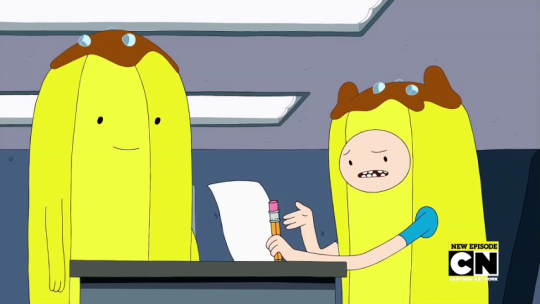
“It’s not that great!”

“No it’s good man!”

“Maybe though, add some shading around where the head shadows the neck.”

“Make sure you it’s obvious where the light source is coming from.”

“It will help give the drawing more volume and depth.”
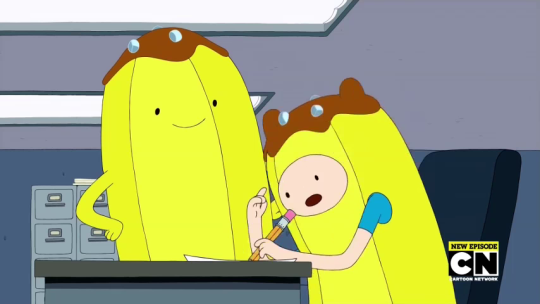




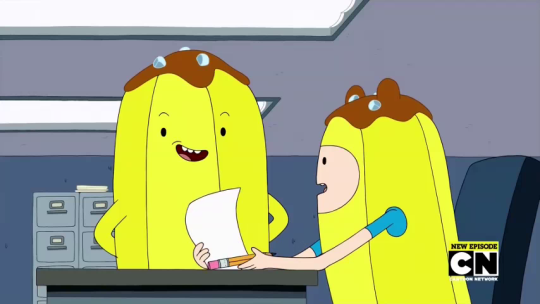
“Whoa! You’re really good at art, man!”
286K notes
·
View notes
Text
Considering the Irrationality of Your Characters

In honor of The Hunger Games movies finishing up this last year, I re-read the trilogy (again), and realized (again) that when it comes to Katniss Everdeen, Suzanne Collins doesn’t forget to consider Katniss’s irrational side.
Often when we deal with characters, we spend a lot of time building their rational side. We look at their rational motives and try to make sure they are thinking logically for the story line. I know I have spent hours trying to brainstorm and pin down the logical thoughts in some of my characters’ heads. But considering how your character can be irrational can provide plenty of ideas for you to play with.
Throughout the series, Collins lets us in on Katniss’s irrational thoughts and feelings. Katniss sometimes even realizes they are irrational herself. As vital as logical thoughts and feelings are, sometimes it’s the irrational that can kick our story up a notch and escalate the suspense.
One of the examples that leapse to mind is in the first book, The Hunger Games, when Katniss first gets into the arena. Haymitch specifically tells her not to run to the cornucopia, but when Katniss sees the bow and arrows, she’s extremely tempted to go for them. Peeta sees this and shakes his head at her, which leads Katniss to hesitate. She misses her chance to get the bow and arrows and is angry at Peeta.
We get how she’s angry at Peeta, but from a strictly logical point of view, it’s irrational. Peeta was just trying to discourage Katniss, in order to keep her alive. Katniss wasn’t supposed to go for the bow anyway. And Katniss is mad at him?
That’s a simple example, but there are plenty of others. Sometimes it’s Katniss’s irrational emotions and decisions (especially coupled with her impulsiveness and borderline hysteria) that really amplify the tension in the story. It keeps the story and Katniss interesting. And at least for me, it make Katniss feel more real.
Now a bit of warning, usually (not always) the reader needs to understand where the irrationality is coming from, on some level. If it’s out of the blue and out of character, this can hurt rather than help your scene. Katniss being mad at Peeta might not be the most logical thing, but we understand her on a human level. She’s really upset about not getting the bow, and the secondary emotion–anger–is being directed at him.
Like in my post about the emotional range of your character, how irrational your character is and in what why he is, depends on his personality. Katniss tends to be very angry or in breakdown mode when she becomes irrational. Other people get irrational when they are extremely happy (irrationally optimistic, for example) or when they are jealous. Some characters are irrational more often than others.
Powerful emotions are a great path to irrational behavior, but flawed reasoning can lead your character there as well.
So don’t forget to consider irrationality in your story.
2K notes
·
View notes
Text
me writing a sentence

115K notes
·
View notes
Text
Things to Consider When Creating Fictional Diseases
What are its symptoms? How do they progress as the disease worsens?
How does it spread? From contaminated water? From bodily fluids? From food that’s gone bad?
How do people believe it spreads? Do they blame deities, certain animals, or certain groups of people for its spread? How do they treat the things they blame for the disease?
How well understood is it by the general populace? By specialists?
How fast can it spread through a population?
Can it be transmitted by other species? If so, do those other species exhibit symptoms or are they asymptomatic carriers?
Are some people immune to it?
What groups are the most severely affected by it? Young kids? Immunocompromised people? Old people?
Is there a cure? If so, does the cure have side effects? How many times does it need to be administered? How often? How expensive is it?
Are there many different ways to treat it? Which methods are the newest?
What ineffective or even harmful treatment methods do people think work against it?
Will it do away on its own eventually?
How often is it fatal?
Is it viewed as more of a nuisance or something to be seriously concerned about?
How can people attempt to prevent it? Hand washing and other kinds of good hygiene? Vaccines?
Are their any over the counter medications that can be used to treat it or do you need a prescription?
Is it used as a bio weapon?
Are some people more genetically predisposed to it than others?
Are the infected quarantined?
2K notes
·
View notes
Photo





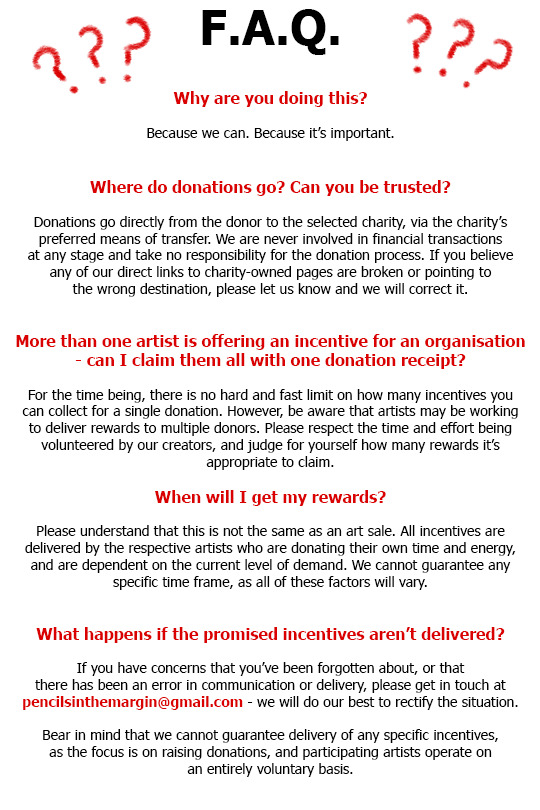
We are delighted to formally launch Pencils in the Margin!
Pencils in the Margin is connecting artists, writers and other creators with the aid organisations working on the ground on behalf of detainees – from humanitarian shelters to pro-bono migrant law services, human rights initiatives, and people working tirelessly to reunite families separated at the border.
You donate your money, we donate our time. Simply follow direct links from our curated list of charities and send your donation receipts to the artists who have ‘adopted’ those organisations for rewards in your inbox.
The more you give, the more you get!
To sign up to offer incentives as part of the project, leave your details here.
Share, share, share, give money, get art, and don’t hesitate to get in touch if you have any questions, suggestions, or want to be involved!
Thank you tumblr!
41K notes
·
View notes
Text
List of Powers and Abilities
Persuasion- The ability to convince others of anything
Danger Warning- A precongnitive ability warning you of incoming danger
Elasticity- The ability to stretch ones body like rubber
Paralysis Shock- The ability to immobilize your victims motor functions temporarily
Multilingual(idk what to call it) - The ability to comprehend any and all Languages
Flight- the ability to rise up and move through the air
Nature control- The ability to manipulate and make plant life
Size shifting- The ability to alter the size of your body
Self Multiplication- The ability to create multiple versions of yourself at once
Teleportation- Transporting oneself from one place to another
Super Mentality- The super Human capacity to retain information
Relation identification- The Ability to recognize ones relationship with another with ease
Invisibility- Remain Unseen to the naked eye
Pain Infliction- The ability to inflict pain on your victim with the mere thought
Item Duplication- The ability to create multiple versions of an object of one’s choosing
Pyromatic- The ability to make and manipulate fire
Light Manipulation- The ability to make and manipulate Light
Psychic Electrokines- The power to cause painful electric shock-like jolts
Immovable(idk what to call it)- The ability to make your body impossible to move
Super intelligence- intelligence beyond Human Capacity
Time manipulation- The ability to manipulate time (go towards, backwards, pause, etc.)
X-ray vision- The ability to see through anything
Tactile Telepathy- The ability to read the deepest thoughts of a person
Sensory Deprivation- The ability to discontinue any one of a persons 5 senses
Possession- The ability to take control of someone else’s body
super Empathy- The ability to Fully comprehend the emotions and moods of other
Ice Manipulation- The ability to manipulate or make snow and/or ice
Precognition- The ability to see what’s going to happen before it happens (future vision)
Air manipulation- Control over air in the atmosphere
Sonic Scream- The ability to emit a highly enhanced scream of high amplitude
Relationship Manipulation- The ability to influence ties between people by strengthening or weakening the bond
Healing- The ability to heal another’s or your own wounds
Animal control(idk what to call it)- The ability to Speak to and/or take command of all animal kind
Water control- The ability to command water at your leisure
Keen Hearing- The ability to hear things outside of the normal human range
sensory enhancement- The ability to enhance any of you or another’s 5 senses
nightmare vision- The ability to show another their deepest worse fears
life form- The ability to make an intimate object or item come to life
Shape shifting- The ability to change yourself to look like another person/animal/object
Telekinesis- The ability to move objects and people with your mind
Super strength- The ability to obtain strength above the human capacity
Super speed- The ability to exceed speeds past the human capacity
Force Field Protection- The ability to create a force field around anything including yourself
Mind control- The ability to take charge of another persons thoughts
weather manipulation- The ability to manipulate climate, wind, rain, hail, lightning, tornadoes, etc.
Feel free to add more! hope this helps some people out!
4K notes
·
View notes
Text
Japanese tea bag maker Ocean-Teabag has been making waves by creating little parcels of aroma in the shape of marine animals. Luckily for us, their wide range of tea bags are available at online Japanese novelty retailer Village Vanguard, maker of such fine products as Space Tea and cat-shaped kitchen utensils.



Ocean-Teabag’s earliest designs included beautiful dolphin tea bags filled with blue mallow tea leaves. Steeping them turns your otherwise normal pot of water into a tranquil ocean. Proving to be a hit among tea lovers, Ocean-Teabag expanded their repertoire to many other sea creatures including the sea turtle (butterfly pea jasmine tea)…

the distinctive ocean sunfish (Japanese hojicha — roasted green tea)…
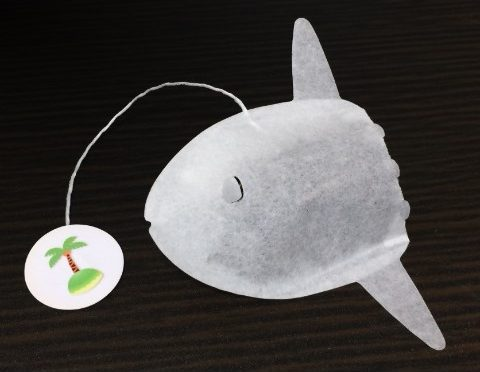
the graceful manta ray (tropical mango tea)…

and even a blood-thirsty shark (blended herb tea).
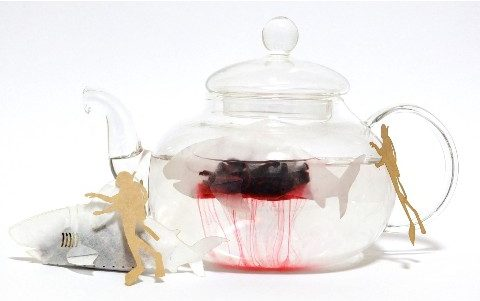
The newest addition to their robust series of marine creatures is a tea bag shaped like an innocuous sea cucumber. This little parcel is filled with jasmine tea, as well as a smidgen of sea cucumber powder to lend some authenticity. Ocean-Teabag warns that some people who have a sensitive tongue may find it tasting a little fishy.
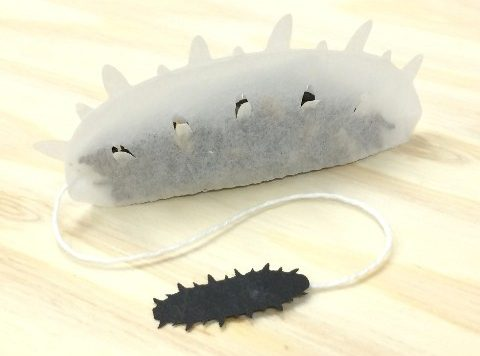
The company also crafted a deep sea series that will satisfy even the most adventurous of tea drinkers out there. A few such examples are the anglerfish (earl grey tea)…

the creepy giant isopod (Eastern Beauty oolong tea)…

the horseshoe crab (white apricot tea)…
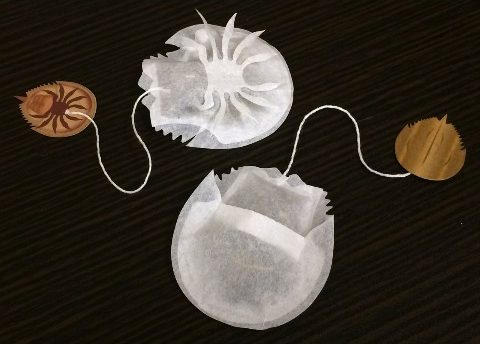
…and lastly the king of them all, the enormous giant oarfish. ( Delicious Assam tea of epic proportions! ) Just like its namesake, it measures a whopping 19 centimeters (7.5 inches). Drinking tea becomes an art when half of your tea bag hangs out of your cup.
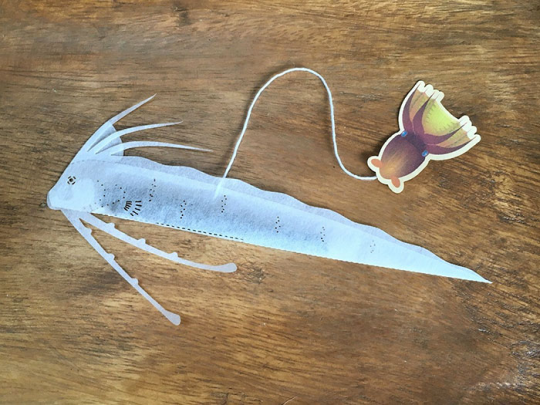
While the notion of turning your cup of tea into fish-inhabiting waters is not new, these tea bags will hopefully conjure up images of gentle ocean waves in your mind.
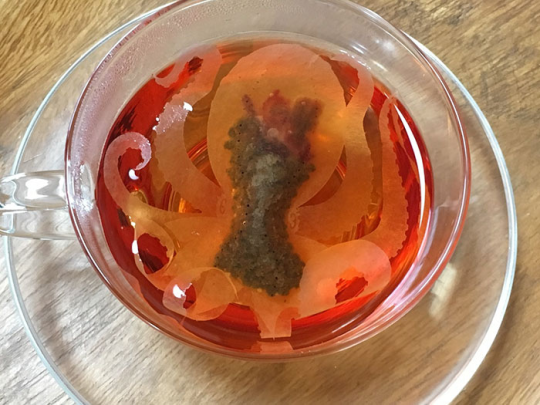
WHERE TO FIND THE TEA
104K notes
·
View notes
Video
453K notes
·
View notes
